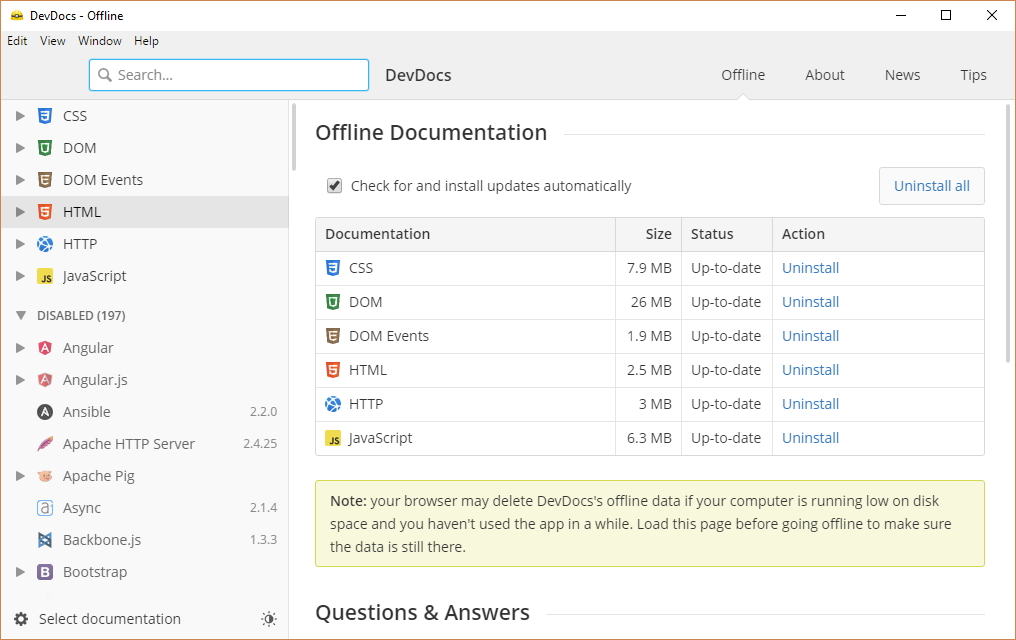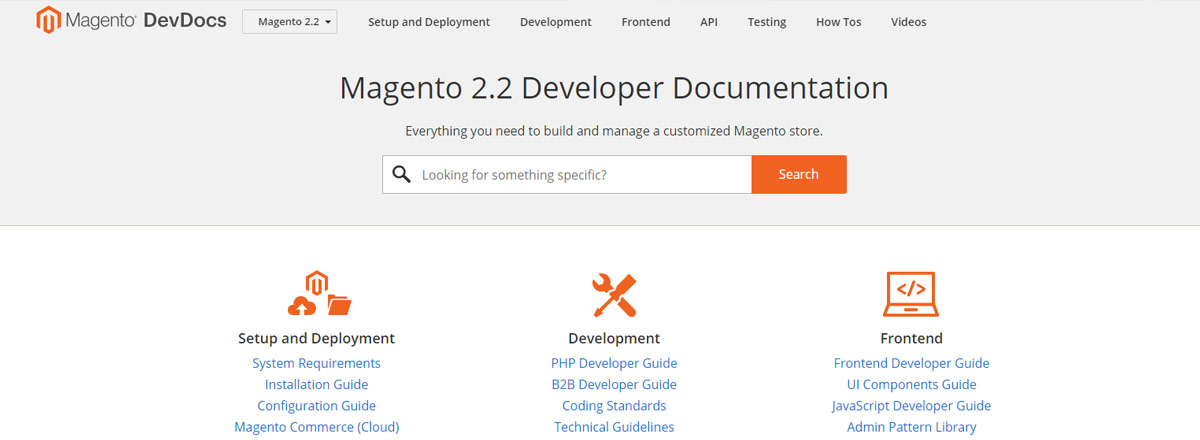

#Src devdocs update
Note: there is currently no update mechanism other than git pull origin main to update the code and thor docs:download -installed to download the latest version of the docs.
#Src devdocs install
To download and install all documentation this project has available, run thor docs:download -all. To update all downloaded documentations, run thor docs:download -installed. You can see the list of available documentations and versions by running thor docs:list. The thor docs:download command is used to download pre-generated documentations from DevDocs's servers (e.g. Once you have these installed, run the following commands:įinally, point your browser at localhost:9292 (the first request will take a few seconds to compile the assets).
#Src devdocs Offline
It's up-to-date and works offline out-of-the-box.ĭevDocs is made of two pieces: a Ruby scraper that generates the documentation and metadata, and a JavaScript app powered by a small Sinatra app.ĭevDocs requires Ruby 3.2.1, libcurl, and a JavaScript runtime supported by ExecJS (included in OS X and Windows Node.js on Linux). Unless you wish to contribute to the project, we recommend using the hosted version at devdocs.io. Please reach out to the community on Discord if you would like to join the team! We are currently searching for maintainers Looking to build a website, blog, landing page, lightweight app, or an email? Head over to our CMS developer docs.DevDocs combines multiple developer documentations in a clean and organized web UI with instant search, offline support, mobile version, dark theme, keyboard shortcuts, and more.ĭevDocs was created by Thibaut Courouble and is operated by freeCodeCamp.

You can also stay up to date on new features, announcements, and important changes by subscribing to the Changelog blog. These forums are a great place to make your voice heard - community feedback is incredibly important to us and our ongoing efforts to improve HubSpot’s developer experience. Get your questions answered, make connections, and share your insights by joining HubSpot’s growing developer community forums and Slack community. After that, you can create and manage your App Marketplace listing right from your developer account. When you’re ready to share your app with the world and become an app partner, read our listing and certification requirements. Related: Learn more about authentication methods or OAuth. If you want to learn the fundamentals of HubSpot’s platform or see an example before making your first API call, you can find sample apps and tutorials as well as detailed information about developer accounts, working with OAuth, API rate limits, and more in our Integration Guides section. Once you’ve configured your app’s auth settings in your developer account, you can use Postman or make test calls right from an endpoint reference page. The endpoints section lists each endpoint, its parameters, and request examples in multiple languages. The API overview includes a brief summary of its functionality, use cases, and any special considerations for creating an integration. Reference docsĪll API reference docs include an overview section and an endpoint section. HubSpot’s API documentation is split into two sections: reference docs and integration guides. Learn more about our client libraries here They take away the need to know the exact URL and HTTP method to use for each API call among other things leaving you more time to focus on making your application. They are written in several different languages and help bridge the gap between your application and HubSpot’s APIs. Related: What’s the relationship between a developer account and a test account? Client librariesĬlient libraries are designed to help you interact with the HubSpot APIs with less friction. You can also use your developer account to create test accounts, monitor app status and performance, or publish apps to the HubSpot App Marketplace. There are several reasons for this: A developer account is where you create HubSpot apps, each authenticated with OAuth and provided with a configurable set of features and permissions. The best way to start building integrations with HubSpot is to create a developer account. All HubSpot API calls are made under and all responses return standard JSON. They use many standard HTTP features, including methods ( POST, GET, PUT, DELETE) and error response codes.

Our APIs are designed to enable teams of any shape or size to build robust integrations that help them customize and get the most value out of HubSpot.Īll HubSpot APIs are built using REST conventions and designed to have a predictable URL structure. HubSpot’s developer platform is a core part of our mission to empower organizations to grow better.


 0 kommentar(er)
0 kommentar(er)
